The bone-articular structure of a person is characterized by a complex structure and includes a number of elements. The hip joint is one of the largest and most loaded joints within the human musculoskeletal system. It is located at the junction of the femur and the pelvis. The joint has a special structure, which ensures free mobility of the limbs in different directions. It is with this node that a person's ability to walk upright is connected. With the appearance of pain discomfort in the hip joint, a serious decrease in its functionality is observed with problems in movement or sitting. In some cases, numbness of the limbs is possible.
The main causes of pain
In order to start timely treatment of hip joint pathologies, it is necessary to undergo a comprehensive examination as soon as possible to diagnose diseases and the causes of their occurrence. At the same time, the diagnosis can be difficult, since pain is provoked by a number of problems - injuries, skeletal diseases, background pathologies of internal organs. The intensity and nature of the pain also varies. They can be both painful and sharp, burning.
To the greatest extent, complaints of pain in the hip joint can be heard from patients older than 50 years. Moreover, such violations are usually found in women. This refers to pathologies of the joint itself or the hip.
Pain can be caused by such factors that affect the condition of the joint:
- Problems of traumatic origin - fractures affecting the neck of the femur, direct bruising of the articular region, intense hip dislocations. Myositis ossificans, which originates and progresses due to injuries caused to the joints, can provoke discomfort and pain. Specialists also note frequent fractures of the pelvic bones, the development of epiphysiolysis of the femoral head.
- Damage to the connective tissue in the hip joint, which is caused by the development of Reiter's disease, rheumatoid arthritis, ankylosing spondylitis.
- Pathological disorders of the articulation, which occur against the background of degenerative processes in the tissue area. For example, we are talking about coxarthrosis.
- Osteochondropathic manifestations caused by the progression of osteochondritis dissecans, Legg-Calve-Perthes pathology.
- Deviations in skeletal development processes. For example, this applies to the epiphyseal varus deformity of the foot, which is typical for adolescent patients.
- Inflammatory changes in soft articular tissues. These pathologies include bursitis, transient synovitis, coxitis of the articular variety due to the action of the tubercle bacillus.
Traumatic causes of pain syndrome
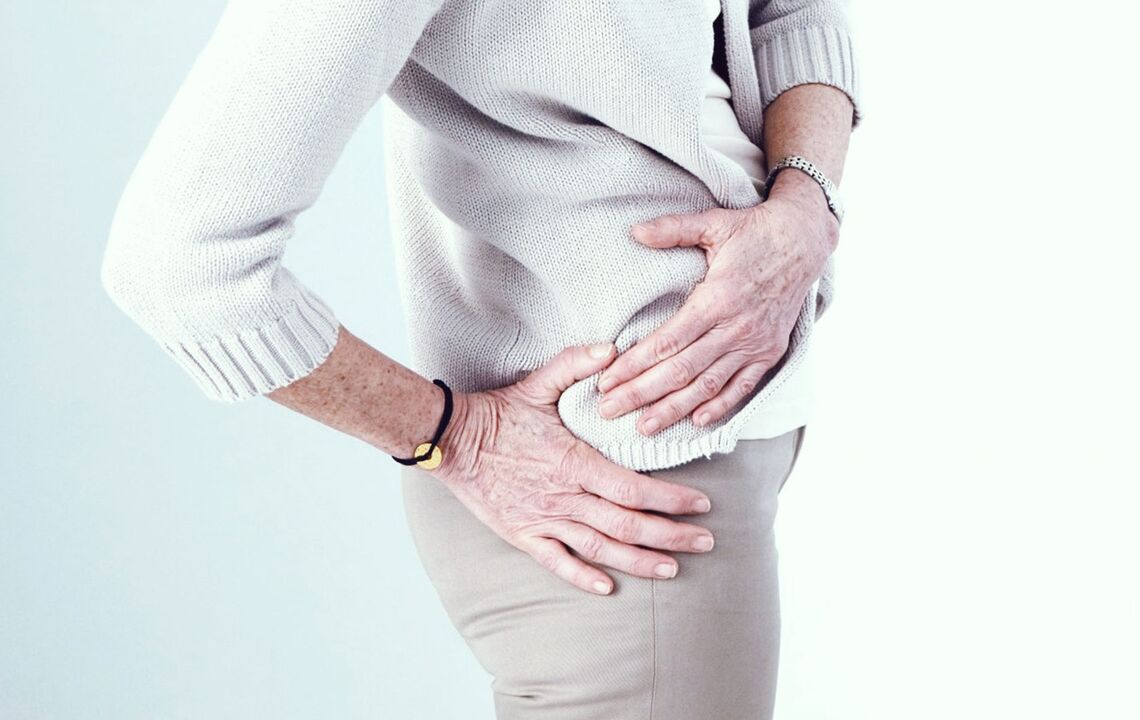
With the appearance of pain in the hip joint, attention should be paid to such pathologies of a traumatic nature that can cause them:
- Congenital damage to the hip in the form of dislocation, which occurs due to improper behavior of the birth process or is formed in the prenatal stage of the child's development. Such a violation can be quickly diagnosed already in newborns. They will have unevenness in the gluteal folds and may show signs of shortening one leg. In some cases, a pinched nerve appears. Experts recommend paying attention to the signs of such deviations, as the disease itself is considered dangerous. It often leads to the preservation of the consequences of the trauma throughout the rest of life.
- Dislocation of the thigh of a traumatic nature - there are sharp pains, as a result of which the ability to perform movements is lost. The patient cannot take a vertical position or sit down. Edema and hematoma form in the area of the injured joint. If there are signs of hip dislocation, then any physical load is contraindicated. Sports during this period lead to a deterioration of the patient's condition, cause the development of negative changes and pathological disorders in the hip joint. With such injuries, treatment should be started immediately.
- Fracture of the neck of the femur, which is usually characteristic of women over 60 years old. This condition is caused by a fall or a blow aimed at the hip joint area. When a fracture occurs, the patient feels a sharp pain syndrome. Such pain will intensify during movement. Gradually, the pain gives on the inner side of the thigh. Swelling and hematoma appear at the site of injury. With a fracture, shortening of the limbs is observed, a person's gait is characterized by a limp, clicks are heard in the joint area. The injury often causes a compression of the nerve, resulting in numbness in the thigh.
- Fracture of the pertrochanteric type of the femur - accompanied by severe or moderate pain. When the patient is in motion, the pain begins to intensify. A possible consequence is a pinched nerve, which causes back pain and numbness in the extremities.
- Getting a bruise on the hip joint. The pain syndrome is moderate, but active movement can provoke its increase. In this case, the pain decreases and disappears when the person is at rest. This factor is considered the most common. Bruises are diagnosed in patients with frequent falls, especially in the elderly. The patient complains of lameness, but this symptom disappears relatively quickly.
Hip joint injuries caused by trauma are considered by specialists as the main cause of pain. With severe fractures and dislocations, in many cases, surgical intervention is prescribed. An indication for immediate hospitalization is a pinched nerve and numbness of the limbs.
The influence of systemic pathologies on the occurrence of pain
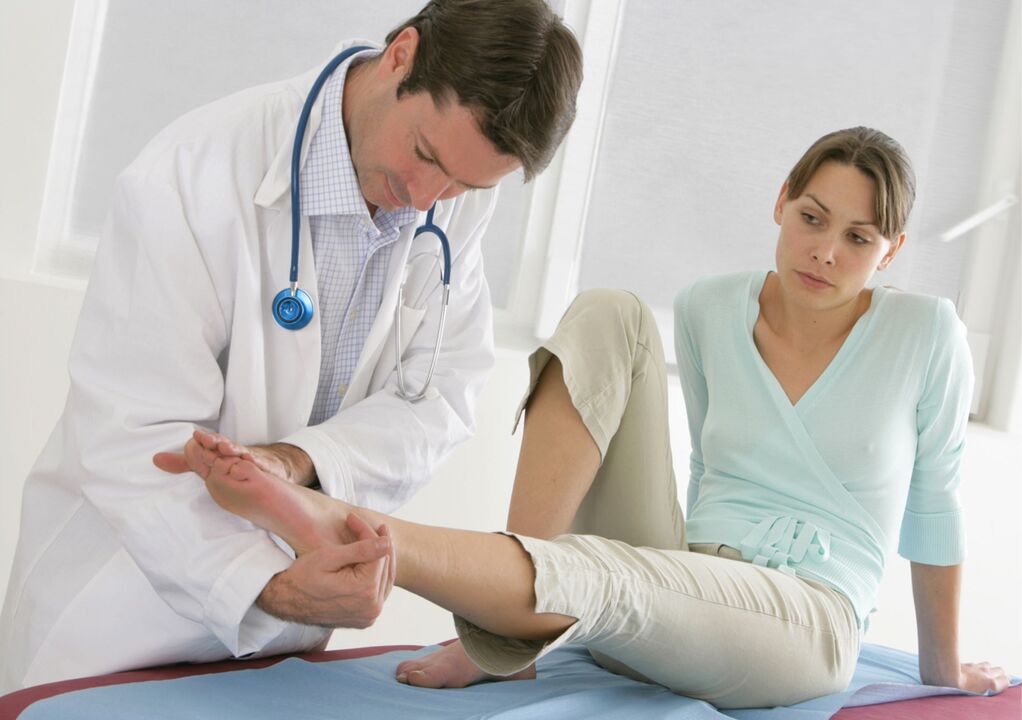
A frequent cause of pain in the hip joint while walking or in another position of the body is the development of systemic lesions of the connective tissue. Such pathologies require a continuous process of therapy, as they belong to the group of practically incurable ones. It is important to ensure a comprehensive nature of treatment with an impact on the causes of the onset and progression of pain and other symptoms.
Among the systemic pathologies that can provoke pain in the hip joint, include:
- Ankylosing spondylitis, which causes dull pain in the joints. Patients affected by this disease notice an increase in negative symptoms at night. Usually the sensations are localized in the area of the sacrum or pelvis. The pain syndrome is able to give in the area of the knee joint, hip, hip. Frequent shots are possible. In this condition, walking and other movements are difficult, the patient shows stiffness. The pains in the hip area are strong and the joint is affected by the inflammatory process.
- Reiter's syndrome - associated with damage to the articular part, as well as organs of the genitourinary system. There is a parallel inflammatory process in the conjunctiva. This is an autoimmune disease that is caused by the action of an intestinal infection. The development of the pathological process can begin several weeks and even months after the penetration of pathogens into the body. Patients complain of acute hip pain. The pain syndrome also affects the joints. This causes an increase in body temperature. There is swelling in the pelvic area on the left and right side. This pathology is usually associated with the symmetrical nature of joint damage.
- Arthritis of the rheumatoid type, in which damage to the connective tissue is observed. The process of the development of the disease does not cause the formation and release of purulent masses. Usually, pathology becomes a harbinger, indicating the possibility of developing coxarthrosis of the hip joint. The disease progresses gradually, although the initial symptoms are swelling and swelling. The patient begins to complain of discomfort during movement, the pain is passing. An inflammatory process develops in the joint, which leads to an increase in general and local temperature. Further development of changes is associated with stiffness of movements, activation of the pain syndrome in the lateral lying position. Pathology in most cases develops symmetrically. Destruction of the hip joint leads to nerve compression and numbness of the extremities. A quick start of the therapeutic process is required.
Pathologies of a systemic nature often cause a lot of inconvenience to patients. There are pains that vary in intensity and character. They can be sharp, sharp, attractive. It is very difficult to get rid of such discomfort on your own, even finding the body at rest does not help. Therefore, targeted treatment is required, especially when the pathology is detected in newborns. Ignoring symptoms can worsen a person's condition.
Pain caused by degenerative disorders

Often, patients notice the presence of sharp, burning or pulling pains in the joints, but they have not received injuries and have not been diagnosed with autoimmune diseases. In this case, degenerative changes caused by such diseases can cause:
- Deformation of the varus epiphysis, which is more common in teenagers. The pains are dull and pulling, can be given in the inner area of the knee joint. The increased sensations occur during running or during other sports activities. Shots are periodically observed, clicks in joints are heard.
- Coxarthrosis, which is considered a fairly common pathology of the hip joint. A violation can be detected in patients regardless of their gender. The disease requires a long and complex therapy. It causes an active progression of articular disorders of a degenerative and destructive nature. The main symptomatology is reduced to the feeling that the joint hurts after physical exertion. When they are at rest, these sensations disappear, there are no restrictions on movement. The pain then radiates to the hip and thigh area. With daily stress, this symptomatology increases, although it disappears at rest. With prolonged walking, limping begins to appear, clicks are heard in the wrist. At the same time, there is a malfunction in the work of the muscle tendon structures, the tone decreases. The last stage of the development of the pathology is characterized by the appearance of pain even at rest, especially at night. Severe pain is combined with severe lameness and muscle atrophy. This leads to immobility of the patient. In the final stage, treatment focuses on inhibiting destructive changes in the joints.
The development of degenerative pathologies provokes constant lameness, which leads to interruption of work functions and a decrease in performance. Lack of physical activity worsens the patient's condition. Over time, difficulties arise even with the usual getting out of bed.
The influence of inflammation and infections on the occurrence of pain
The appearance of discomfort can be associated not only with direct damage to the bone structures of the joint, but also with inflammatory processes in the muscles, tendons and articular bag.
Pathological processes are also caused by such diseases of an infectious nature:
- Purulent arthritis. The disease is accompanied by an increase in general temperature and redness of the skin in the joint area. There is an appearance of extensive edema with acute or sharp pain. It is difficult, and sometimes it is simply impossible to carry out any load. Over time, the sensations take the form of shots. These changes require immediate treatment to prevent the development of sepsis.
- Aseptic necrosis of the femoral head, which usually develops in young and middle-aged men. The disease is activated due to interruptions in blood circulation in the joint area. Necrosis leads to the death of tissue cells. The pathological process is manifested in a pronounced pain syndrome that radiates to the hip area, as well as a burning sensation in the damaged areas. The intensity of the pain can be so strong that a person has difficulty supporting the limbs. This leads to problems getting out of bed. An injection of an analgesic is used to anesthetize the joint. Symptoms disappear after a while, but the further progress of the disease provokes atrophy of muscles and tendons. The person begins to limp, his gait changes.
- Tuberculous arthritis. Pathology is a different manifestation in young children with a weakened immune system. Progress is very slow. The child has increased fatigue, is inactive in games. Muscle atrophy is accompanied by clicks in the joints and shortening of the limbs. After some time, joint pains appear, which are pulling or burning in nature. The joint is covered with suppuration with increased symptoms.
- Bursitis is an inflammatory lesion covering the articular sac of the joint. The main symptom is pain, spread along the limbs. Severe pain worsens during movement. At rest, the limb hurts, burns.
Due to the development of infectious processes, various pains appear in the hip joint. It can be a burning, pulling or dull discomfort. The intensity of sensations can be high, and therefore a person experiences difficulties with night rest. This condition requires immediate treatment.
Diagnosis of pathologies
Complex diagnostics, which should include:
- ultrasound examination of the condition of the hip joint;
- x-ray examination in two projections;
- laboratory study of blood parameters based on general and biochemical analyses, which helps to identify rheumatoid factors, the increase in the number of leukocytes, the change in the sedimentation rate of erythrocytes;
- general examination of the patient with recording of complaints and palpation of the damaged area;
- MRI diagnosis.
Based on the results of the examination, the correct diagnosis is determined and the complex treatment of the pathologies that provoke the pain syndrome is prescribed.
Features of treatment
If infrequent or intermittent pain occurs, the symptom should not be ignored. In this condition, you should consult a doctor and start treatment. The therapeutic process is determined by the cause that causes pain.
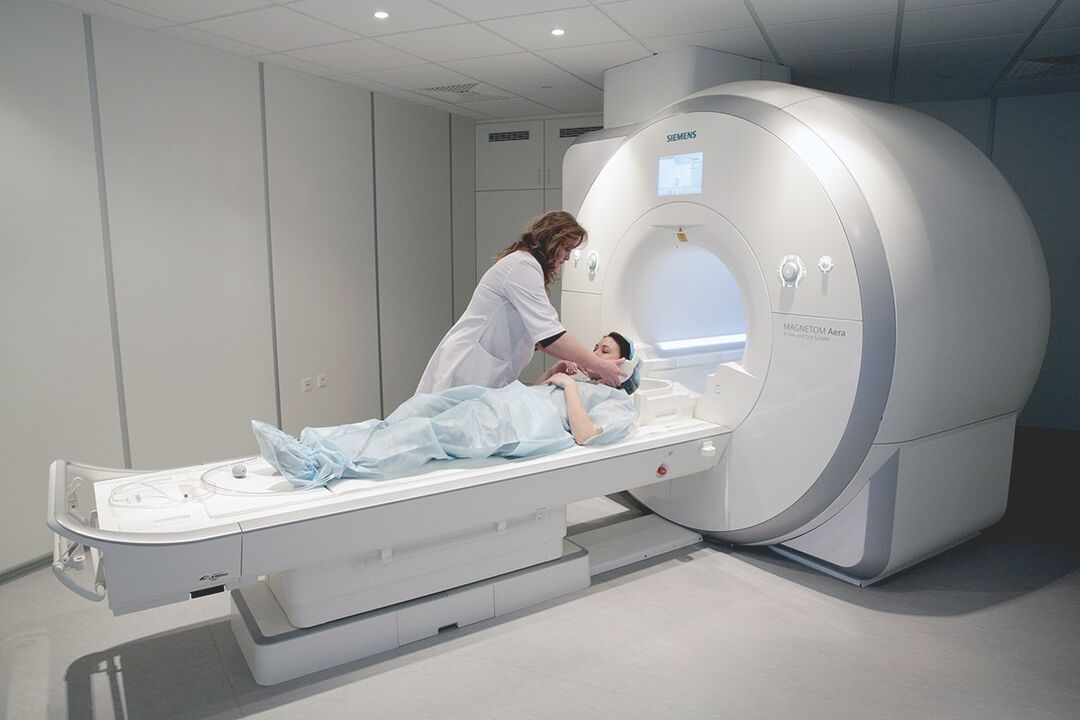
The presence of congenital dislocation
With such a pathology, a special orthopedic device is placed in the joint area of the baby. They can be disruptive or divisive. In some cases it is recommended to use the Frejka pillow. Thanks to these models, the baby's feet are in a physiologically correct position. The child keeps these funds for 6 months, sometimes even longer.
When conventional therapies fail, surgery may be indicated. Operatively, the femoral head is reduced and some associated defects are eliminated. After removing the orthopedic devices, light massage procedures are prescribed to strengthen the muscle structures.
Dislocation of a traumatic nature
Such an injury requires the use of medications to eliminate tone and restore the muscles. Then, the patient should be at rest to stabilize the structures. If there are complaints of numbness, then this will indicate a pinched nerve. In this case, you will need to consult a neurologist.
Hip fracture
The treatment of this injury is carried out by a traumatologist with surgical manipulations. Conservative methods of therapy are possible, but often they do not bring the desired effect. In the absence of the possibility of an operation, a plaster-type bandage is placed on the patient from the middle sector to the heel.
It is important to remember that the most severe effects are experienced by elderly patients. Fractures in them usually do not grow together, and the recovery period itself lasts several months.
Moreover, damage leads to many consequences. Patients show dysfunction of the respiratory organs, disruption of the heart and vascular system, this is due to the lack of conditions for an active lifestyle and normal movement. Patients experience problems with sitting, resulting in a burning sensation in the soft tissue area as a result of the fracture.
During the operation, the head and body of the bone are fixed with pins and screws. Endoprosthetic technology is used.
Development of Bechterew syndrome
The treatment of this pathology requires an integrated approach, which makes it possible to reduce the intensity of the manifestation of symptoms, which is caused by inflammatory disorders. During therapy, medications are taken - anti-inflammatory drugs, hormonal drugs, immunosuppressants. In addition, physiotherapy is performed.
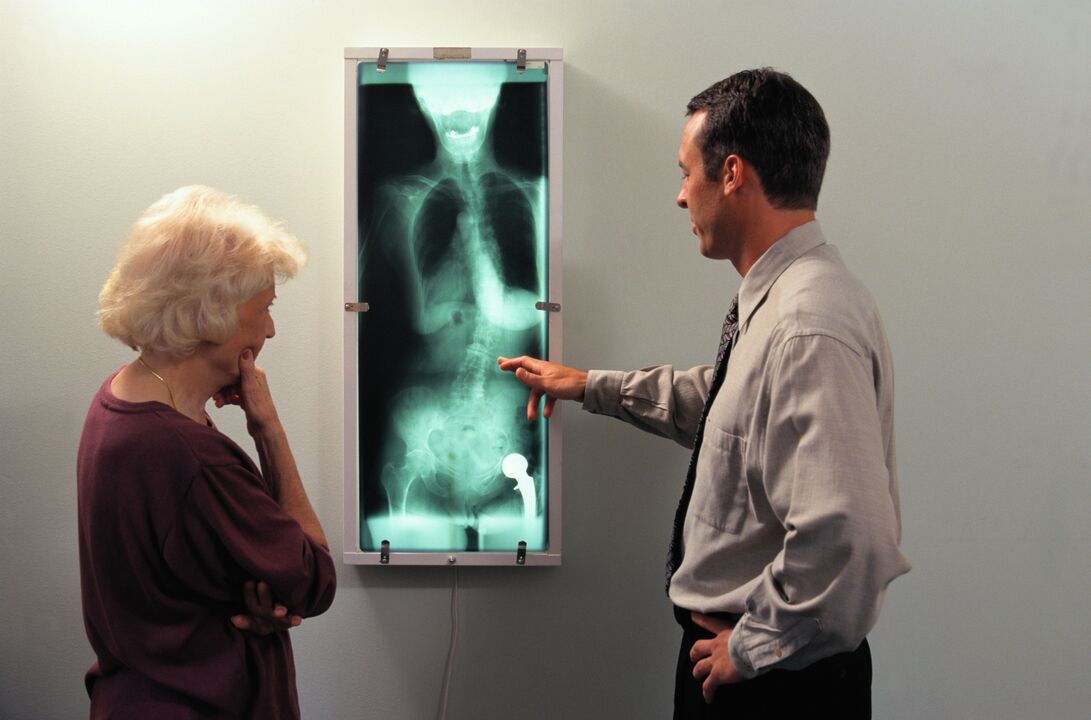
A course of physical exercises for muscle stretching is also prescribed. Massage is useful in this condition - the joint is processed on the left or right side, depending on the manifestation of the disease.
The therapeutic process is determined by the attending physician based on the nature of the development of the pathology and the patient's condition. Swimming will help strengthen muscle structures. If the disease has taken a severe form, then the joint replacement procedure is performed.
Reiter's disease
Treatment of this disease without the use of antibiotics is impossible. Anti-inflammatory drugs are also prescribed. In the therapeutic process, the place of glucocorticosteroids, agents that inhibit the activity of the immune system and ointments for topical use should be determined.
The duration of treatment is not less than 4-5 months. At the same time, the probability of relapse is high. The course of treatment should be accompanied by measures to maintain muscle tone through physical activity, for example, through stretching.
Rheumatoid arthritis
Due to the progression of arthritis, pain can occur not only when the joint is in motion, but also at rest. It is impossible to completely eliminate such pain. The therapeutic effect is focused on improving the quality of life of patients. For this purpose, prescribe medications:
- cytostatics;
- hormonal drugs;
- non-steroidal anti-inflammatory drugs;
- antirheumatic agents.
Surgical intervention is prescribed only when the disease passes into the last stages. In this condition, the patient experiences serious problems with walking and sitting. Surgical manipulations are performed by the method of joint fixation or arthroplasty. In the recovery process, stretching exercises, external ointments are prescribed.
Coxarthrosis
The therapy of this pathology focuses on eliminating the causes of its occurrence. In the early stages, the disease can be cured by conservative therapy with the appointment of:
- NSAIDs;
- chondroprotectors;
- funds that restore blood flow;
- pain relievers;
- local ointment with warming effect.
The treatment complex also includes low-intensity exercise therapy. To anesthetize the joint, if necessary, injections are used.
In the last stages of the progression of the pathology, conservative treatment methods are ineffective. In this state, the deterioration of well-being occurs with minimal stress. To get out of bed, anesthesia with injections is required. Treatment is performed surgically due to joint arthroplasty. Elderly patients are not prescribed such a procedure, but are limited to auxiliary manipulations.
After the operation, the rehabilitation process begins. Non-intensive stretching exercises, light with low loads are performed.
Treatment of inflammatory diseases and infections
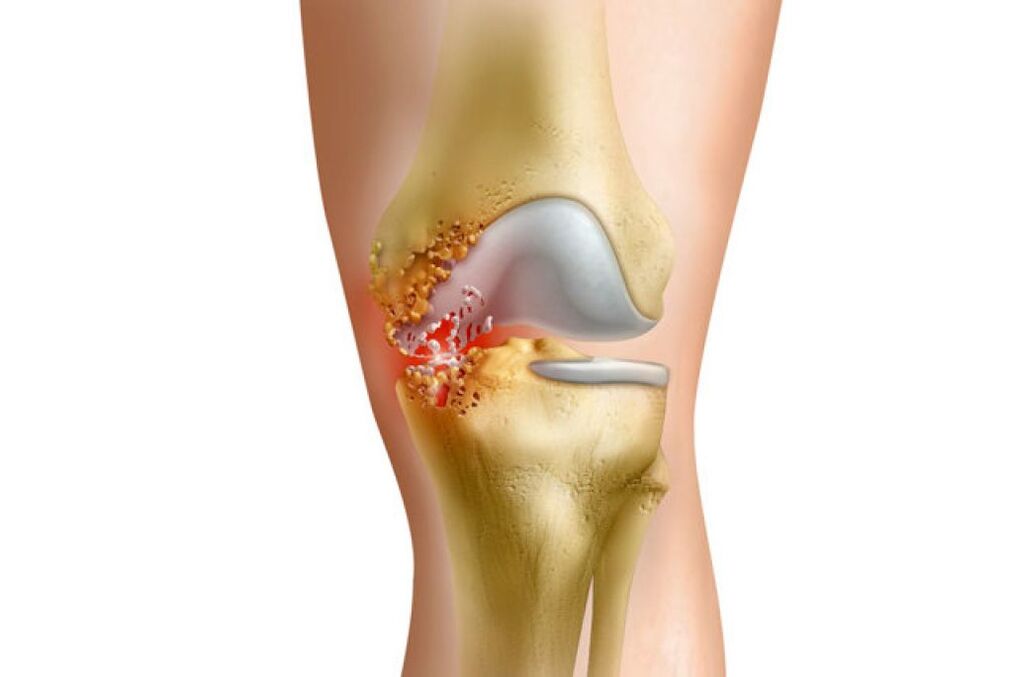
The therapeutic process is determined by the nature of the disease and its manifestations:
- With purulent arthritis, anesthesia of the hip joint is performed by injecting an analgesic into the joint area. It can include several types of drugs at the same time. An antibacterial agent is used in combination with an antibiotic. Pustules are also removed. To ensure the fixation of the limb, a plaster is applied or a splint is used.
- Aseptic necrosis of the femoral head requires normalization of blood circulation and resorption of dead areas. NSAIDs are used for pain relief. The therapy plan includes vitamins, drugs that reduce blood viscosity. Massages and anesthetic ointments will help you get rid of the pain. In parallel, physiotherapy and exercise therapy are prescribed. In severe cases of the disease, minimally invasive surgeries or arthroplasty are performed.
- Bursitis requires quick relief of joint pain. At the same time, an analgesic and an anti-inflammatory drug is prescribed, which is administered intramuscularly. Steroid medications help eliminate severe symptoms of discomfort and pain. The affected joint should be at rest.
- In tuberculous arthritis, conservative methods of treatment are used. The child must be immobile and therefore a tight bandage is used. The appearance of an abscess in the soft tissue area will require removal.
Use of traditional medicine recipes

These funds can be used as an addition to traditional treatment. You should always consult your doctor first. The most popular recipes include:
- Compresses based on blue or white clay. They help eliminate swelling and minimize pain. Apply a clay compress before going to bed and leave it overnight. From above, the damaged area is wrapped with a piece of warm cloth.
- Compress with cabbage and honey. It is necessary to take a leaf of cabbage and cover it with a layer of honey. Then such a compress is applied to the area of the manifestation of burning or acute pain. From above it should be covered with a film, and then insulated with a wool scarf or scarf. The duration of the procedures is up to 1 month. Between manipulations, it is recommended to rub and stroke the affected area.
- Ointment with internal fat and white roots of the foot. Pour 250 g of crushed root into the previously melted fat and cook on low heat for 7 minutes. Allow the product to cool, then apply to the joint surface and leave overnight. A woolen cloth is applied on top of the treated area. So it will be possible to remove swelling and other symptoms.
- A remedy of 2 lemons, 300 g of celery root, 130 g of garlic will help to relieve severe pain in the tendon area. The components must be finely chopped and poured into a container with a lid. Pour the composition with boiling water and mix, and then wrap the container and leave it overnight. Use 1 tbsp. before meals for 1-3 months.





































